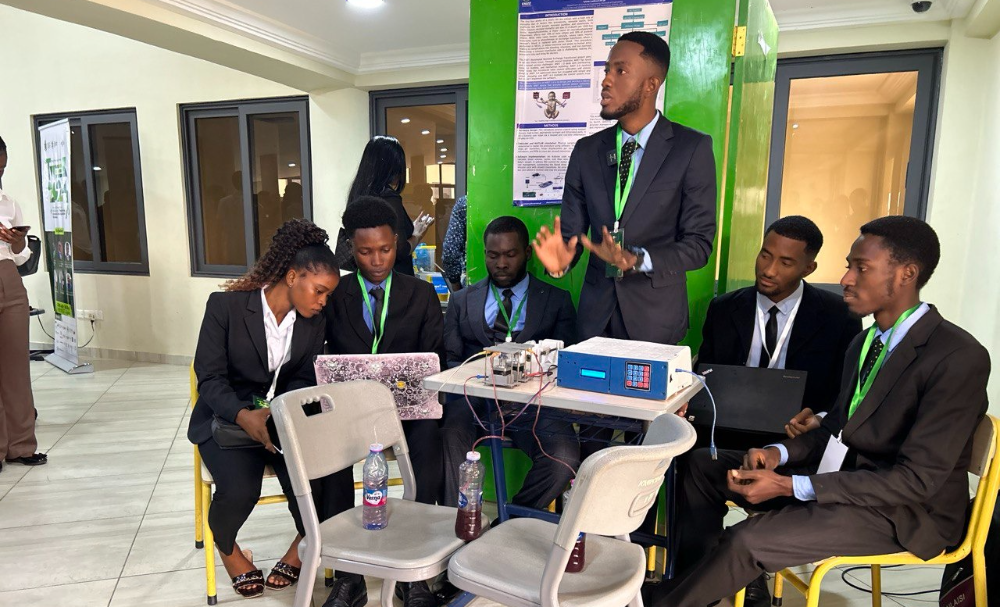A group of students from the Kwame Nkrumah University of Science and Technology (KNUST) has built a smart medical device to help save the lives of newborn babies who need blood transfusions.
The students, all from the Computer Engineering department, developed a device called ANET, short for Automated Neonatal Exchange Transfusion. This new tool is designed to make a critical medical procedure called neonatal exchange transfusion (NET) safer and more accurate.
NET is used to treat newborns with severe jaundice or other serious blood conditions. The procedure involves slowly removing some of the baby’s blood and replacing it with healthy donor blood. Normally, this is done by hand, which can be time-consuming and risky if mistakes happen. Even small errors in the amount of blood removed or added can lead to infections, blood pressure problems, or even put the baby's life at risk.
To solve this problem, six final-year students: Samuel Kyei Agyemang, Enoch Koranteng, Joseph Derrick Anane Nti Koduah, Henry Agyemang Duah, Fabian Aataogye Bajwawotei, and Doris Amponsah, teamed up under the guidance of Dr. Prince Odame to create ANET.
Their device uses a small computer (Arduino Nano), along with sensors and motors, to carefully control the amount of blood taken out and put back in. It also has a screen and keypad that allow health workers to enter the baby’s details, after which the machine guides them step by step. If something goes wrong, it stops the process and gives a warning.
ANET uses a special control system called PID control to make sure the blood flow is smooth and matches the doctor’s instructions exactly. In tests, the device performed better than the manual method, helping reduce mistakes and making the whole process more stable and reliable.
The students say their invention will be especially helpful in hospitals that don’t have many trained specialists. It can help save time, reduce stress for medical staff, and most importantly, protect the lives of newborns.
They are now working on improving ANET’s design and plan to test it in real hospital settings. Their goal is to make it more user-friendly and add more features to support doctors and nurses even better.
| Story by Mona Lisa Frimpong (Department of Computer Engineering) | |

















